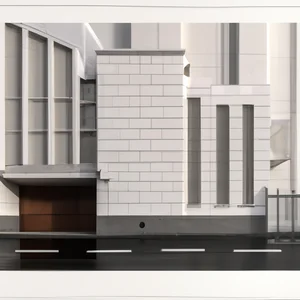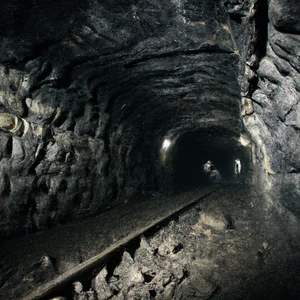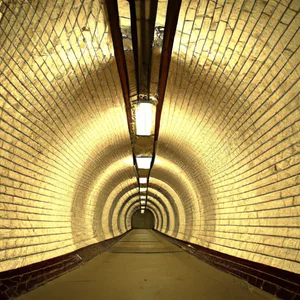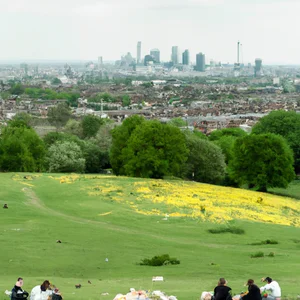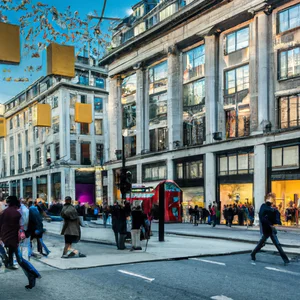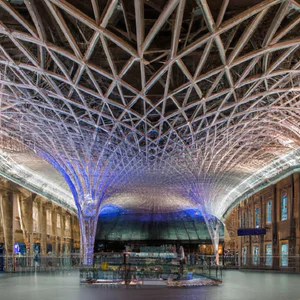Book your experience
The Clink Prison Museum: in England's oldest medieval prison
Ah, the Clink Prison Museum! There, in the heart of London, is this place which is the oldest medieval prison in England. It’s a bit like taking a step back in time, a real time machine, if you think about it.
So, for those who don’t know, the Clink was this penitentiary that saw a lot of people pass through, those who really didn’t want to be noticed. Well, I remember the first time I went there. It was one of those gray days, typical of London, and I must say that the atmosphere was really disturbing, as if the ghosts of the prisoners were following you everywhere.
Visiting it is a bit like entering a mystery novel, with all those stories of torture, punishments and, who knows, even some twists. I’m not sure, but I heard that there are even exhibits on the torture methods of the time. It’s a little macabre, but fascinating at the same time. It makes you think about how hard life was back then.
And then, let’s also talk about the objects on display! There are some things that seem straight out of a horror movie. For example, I once saw some antique handcuffs, which looked more like a work of art than a tool to keep someone in prison. I asked myself: but who really used them? And how did he feel?
In short, visiting the Clink is an experience that leaves its mark on you. It makes you think about how justice and punishment have changed over the years. Of course, it’s not a place for everyone; If you have a weak heart, maybe it’s better to run away and go sip some tea somewhere. But if you are curious and want to discover a piece of history, well, you can’t miss it!
The Thousand-Year History of the Clink Prison Museum
A Journey Through Time
When I crossed the threshold of the Clink Prison Museum for the first time, it was like an immersion in a gothic novel. The stone walls, damp and cold, seemed to whisper stories of forgotten prisoners, of injustices and crushed hopes. An anecdote that particularly struck me was that of a prisoner, a Catholic priest, locked up here for having challenged the Protestant regime of Henry VIII. His story of resistance and faith was one of many that marked the thousand-year history of this place, making it not only a museum, but a witness to tumultuous times.
The History of the Clink
Clink Prison is England’s oldest prison, founded in 1144. Located in historic Southwark, it has been a place of detention for a variety of crimes, from simple misdemeanors to crimes of high treason. Its origins date back to medieval times, when the legal system was brutal and the punishments appalling. Today, the museum offers a detailed overview of this history, with exhibits revealing the living conditions of the prisoners and the torture instruments used.
Practical Advice
For those wishing to visit the Clink Prison Museum, it is advisable to book your ticket in advance online to avoid long queues. The museum is easily accessible by tube, getting off at the London Bridge stop. The visit lasts about an hour, but you may find it difficult to tear yourself away from the fascinating stories that float through the museum.
A little-known tip: If you have the opportunity to talk to the staff, ask about existing historical documents regarding the prisoners. They can often share details and anecdotes that are not exposed to the public.
Cultural Impact and Sustainability
The story of the Clink has had a significant impact on English culture, inspiring literary and artistic works, as well as influencing perceptions of the penal system in the United Kingdom. The museum, committed to sustainability, has implemented eco-friendly practices, such as the use of recycled materials in its renovation and promoting school visits to educate young people about social and legal history.
Immerse yourself in the Atmosphere
Walking through the cells and interactive exhibits, you can almost feel the desperation of the prisoners and see the shadows of the past intertwined with the present. Replicas of torture instruments and detailed descriptions of prison conditions will take you on a visceral journey through time.
An Activity to Try
Don’t miss the opportunity to attend one of the proposed interactive experiences, where you can “live” like a medieval prisoner, testing the chains and prison vests. This is not only a way to understand history, but also an experience that will make you think about freedom and human rights.
Final Reflections
Often, we tend to think of the Clink as just a torture museum, but its rich history is much more. We invite you to consider: what personal story might a place like this hold? What forgotten truths can we discover if we just take the time to listen?
Interactive experiences: live like a prisoner
A blast from the past
I remember the thrill I felt the first time I crossed the threshold of Clink Prison. An air of mystery surrounded the place, as the dim light of the torches cast dancing shadows on the stone walls, as if the ghosts of past prisoners were telling their stories. Living like a prisoner in this interactive museum isn’t just role-playing; it’s an immersive experience that allows you to truly understand the harsh living conditions of those incarcerated here in centuries past.
Practical information
Situated in Southwark, Clink Prison is easily accessible via the London Underground. The museum offers a number of interactive experiences, including the “Prisoner Experience,” where visitors can don period costumes, hear stories from famous prisoners, and even participate in mock trials. The opening hours are daily, from 10:00 to 18:00, but I advise you to check the official website for any special events or guided tours.
An insider tip
A little-known trick is to visit the Clink during the early hours of the day, when the museum is less crowded. This will allow you to fully enjoy interactive experiences without the pressure of crowds. Also, ask the staff to show you the “famous prisoners” room — it’s a corner often overlooked by visitors, but full of fascinating stories.
The cultural impact of the Clink
Clink Prison is not just a museum, but a symbol of the history of the English penal system. Founded in 1144, it is one of London’s oldest penitentiaries, and its existence has influenced how society perceived justice and punishment. The stories that emerge from its walls tell of a time when the justice system was ruthless and often unjust, shedding light on practices that would seem unacceptable to us today.
Sustainability and responsibility
Clink Prison is also committed to sustainability, promoting responsible tourism practices. Part of the proceeds from the visits are reinvested in heritage redevelopment and education projects, helping to preserve not only the history of the prison, but also that of the surrounding community.
An activity not to be missed
Don’t miss the opportunity to participate in one of the historical reconstructions that take place regularly in the museum. These events will allow you to experience highlights of the Clink’s history, making your visit even more memorable.
Myths and misconceptions
A common misconception is that the Clink is just a place to visit for its macabre charm. In fact, it offers an important reflection on justice and human rights, making the visit not only a disturbing experience, but also an educational one.
Final reflection
After visiting Clink Prison, I asked myself: what does freedom really mean in a world that has seen so much injustice? I invite you to reflect on these questions as you explore the stories of those imprisoned and to consider how history continues to influence our understanding of justice today.
Curiosities about the medieval English judicial system
A journey into the past through the halls of justice
During one of my visits to Clink Prison, I found myself reflecting on how fascinating and, at the same time, disturbing the English medieval justice system was. Imagine finding yourself in a 14th century courtroom: the clanking of chains, the buzz of the crowd waiting for sentences and the air full of tension. As I listened to the guide tell stories of summary trials and torture, I couldn’t help but think about how many people’s lives were decided in situations that would seem absurd to us today.
Practical details and local stories
Clink Prison is not just a museum; it is a portal that offers a direct look at the judicial system of the time. Located in the heart of Southwark, London, the museum is easily accessible by public transport. Tours are available seven days a week, but for a quieter experience, I recommend going on weekdays, when there are fewer tourists.
An insider tip
If you want to live an authentic experience, try participating in one of the interactive workshops held every month. Here, you will have the opportunity to simulate a medieval trial, playing the roles of judges, lawyers and witnesses. This experience is not only educational, but will leave you with a new understanding of the justice of the time.
The cultural impact of the justice system
The medieval English justice system had significant repercussions not only on the society of the time, but also on popular culture. The laws and punishments of that period have inspired countless literary works, from Shakespeare to Dickens, helping to shape our contemporary understanding of justice and morality. Clink Prison is therefore not just a place of detention, but a symbol of a culture that has shaped our way of thinking.
Sustainability and responsible tourism
When visiting the Clink, it is important to consider responsible tourism practices. The museum promotes events that raise visitor awareness of human rights and social justice, encouraging critical dialogue on these issues. Participating in these initiatives not only enriches your visit, but also contributes to a greater cause.
An atmosphere full of history
As you stroll within the walls of the Clink, it’s impossible not to feel the weight of history. The walls exude stories of the innocent and the guilty, of dashed hopes and redemption. The soft lighting and the echo of footsteps create an atmosphere that transports you back in time, making you reflect on what justice really means.
An activity worth trying
Don’t miss the opportunity to visit the Clink library, which contains a vast collection of ancient texts and historical documents. Here you can discover little-known details about the medieval justice system and read tales of famous prisoners, broadening your understanding of life in England in the past.
Myths and misconceptions
A common myth is that the medieval justice system was completely arbitrary and unjust. While there were abuses, there were also laws and procedures that attempted to ensure some degree of fairness. Understanding these aspects can radically change your perception of justice at the time.
A final reflection
After visiting the Clink and listening to the prisoners’ stories, I asked myself: what would our society be like if we had not learned from the injustices of the past? The Clink is not just a place of memory, but a reminder to reflect on the laws that today we take it for granted. History, after all, continues to teach us valuable lessons.
The ghosts of the Clink: thrilling night tours
Imagine walking down a dark corridor, the cold, damp walls of Clink Prison seeming to whisper stories of torment and pain. During my visit to this historic London prison, I took one of the night tours and, as the guide talked about lost souls and ghostly apparitions, a shiver ran down my spine. It’s not just the history that makes the Clink a fascinating place; it’s the palpable atmosphere of mystery that envelops every corner.
An experience that captivates you
Night tours at Clink Prison are an unmissable experience for thrill seekers. Starting from 7pm, guided tours wind through the cells and corridors, with expert guides telling the legends of ghosts and apparitions. It is possible to book tours on the museum’s official website, where there is an increase in visitors during the autumn period, when ghost stories seem to come to life. Don’t forget to dress warmly: although London is famous for its temperate climate, nights in the Clink can be surprisingly cold.
An insider tip
A little-known tip: if you want a particularly intense experience, try to book the Friday evening tour, which includes a ghost hunting session with professional equipment. It’s a unique opportunity to completely immerse yourself in the atmosphere of the place and, who knows, you might even catch some unexpected apparitions!
The cultural impact of the Clink
Clink Prison is not just a museum; it is a symbol of the legal and social history of medieval London. Its reputation as a place of torment and punishment has inspired numerous literary and cinematic works. The legends linked to its ghosts continue to permeate popular culture, attracting visitors from all over the world and helping to keep alive the memory of an often dark past.
Sustainability and responsible tourism
Visiting the Clink also means supporting responsible tourism initiatives. The museum has implemented sustainable practices, such as reducing waste and using recycled materials for its exhibits. By choosing to participate in the tours, visitors support the preservation of this important historical heritage.
A thrilling atmosphere
Walking through the corridors of the Clink, the air becomes thick with mystery. Shadows dance on the walls as you listen to the tales of prisoners and ghosts. The cramped cells, decorated with replicas of torture instruments, evoke a sense of uneasiness and wonder. The guide, with his whispering voice, manages to convey the essence of a place that has seen human suffering in all its forms.
An activity worth trying
If you’re looking for an adventure, don’t just visit the Clink during the day. Book a night tour and prepare to live an experience that will take you to explore the dark side of London’s history. You may find that the thrill is not just in the narrative, but also in the energy of the place itself.
Myths and misconceptions
It is common to think that the Clink is just a museum for tourists, but in reality it is a place of great historical and cultural significance. While many visitors focus on the ghost stories, few fully understand the importance of the Clink as a testament to a justice system that profoundly influenced British society.
A final reflection
After visiting the Clink and taking part in a night tour, I asked myself: how many stories of life and death are hidden behind the walls of this prison? The next time you are in London, I invite you not to miss the opportunity to discover the ghosts of the Clink. Who knows, you might return home with a story to tell.
A journey through time: architecture and restoration
The echo of a distant past
I vividly remember my first visit to Clink Prison. As I walked through the heavy wooden door, a shiver ran down my spine. It wasn’t just the biting cold of that October day, but the awareness of entering a place that has seen centuries of history. The stone walls, blackened by time and the elements, tell stories of prisoners and justice, as if each brick pulsated with unspeakable memories.
Architecture that tells
Clink Prison, founded in 1144, represents not only an important testimony to English history, but also a fascinating example of medieval architecture. Its facilities, renovated and restored over the years, allow visitors to glimpse the evolution of a prison system that has influenced the way incarceration is held in the United Kingdom. Recent restoration works have sought to maintain the authentic character of the place, using local materials and traditional practices. This attention to detail means that every corner of the museum conveys a sense of authenticity and history.
An insider tip
If you really want to immerse yourself in the architectural history of the Clink, I recommend asking your guide to show you the lesser-known sections of the museum. In particular, the small chapel, often overlooked by tourists, offers a corner of tranquility and an extraordinary view of the surrounding structures. Here, it is possible to imagine the prisoners taking refuge in prayer, seeking comfort in a moment of great distress.
Cultural and historical impact
The architecture of the Clink is not just a vestige of the past, but has had a significant impact on popular culture and historical narrative. Its fame has inspired numerous books, films and plays, making the Clink a symbol of often cruel and arbitrary justice. This museum serves as a warning: history teaches us that the judicial system must evolve to ensure fairness and justice.
Sustainability and responsibility
In the management of Clink, a strong emphasis is placed on sustainability. The museum collaborates with local organizations to ensure that restoration practices are environmentally friendly. They use recycled materials and renewable energy sources, making the Clink an example of how history and sustainability can coexist.
Immerse yourself in the atmosphere
Walking through the cells, the air is thick with a palpable atmosphere. The walls, decorated with prisoners’ graffiti, speak of hope and desperation. Each step is an invitation to reflect on what freedom means. For those who want an authentic experience, I recommend taking part in an interactive tour, where you can listen to prisoners’ stories told by actors in costume. This offers a unique perspective, making the story come alive and immediate.
Myths and misconceptions
A common misconception is that the Clink was merely a place of torment and suffering. In reality, many of the facilities were used to house political and religious prisoners, some of whom received better care than in other institutions. This highlights the complexity of the justice system of the time and the role that the Clink had in English social history.
A final reflection
As I left the Clink, I couldn’t help but think about how the history of this fascinating place continues to influence our lives. What are the lessons we can learn from such a tumultuous past? The next time you visit a historic place, I invite you to ask yourself: how can history shape our present?
Sustainability at Clink: a responsible museum
A personal experience that illuminates the path towards sustainability
I vividly remember the moment I walked through the door of the Clink Prison Museum for the first time. Not only was I struck by the fascinating history of its walls, but also by the tangible commitment to sustainability that permeated every corner of the museum. The warm welcome from the staff, who told me how the museum is trying to reduce its environmental impact, made me feel part of a bigger project. That visit marked the beginning of a deeper reflection on the places we choose to visit and their impact on the world.
Practical information on sustainability at Clink
The Clink Prison Museum is not only a journey into the past, but also an example of how history can be told responsibly. Recently, the museum has implemented waste-reduction practices, using recycled materials for exhibits and promoting the use of energy-efficient technologies. According to the museum’s director, Sarah Thompson, “we believe that history should be preserved not only for future generations, but also with respect for the environment.”
Insider tip: Attend sustainable events
If you visit the Clink, don’t miss the opportunity to participate in the thematic events that the museum regularly organizes, dedicated to the history of justice and sustainability. These events not only offer an educational experience, but often also include hands-on workshops on how to reduce your environmental impact while traveling.
The cultural impact of sustainability at Clink
Clink’s sustainable approach not only helps preserve the environment, but also reflects a broader cultural shift. Growing awareness about sustainability in the tourism sector is pushing museums and attractions to reconsider their role and social responsibility. The history of the Clink, a place that has seen so many injustices, is now intertwined with a more just and sustainable future.
An engaging atmosphere
Walking among the reproductions of the cells and equipment used centuries ago, the atmosphere of the museum is full of untold stories. The sound of chains, the whisper of the past, and the echo of broken lives resonate as you immerse yourself in an experience that defies time. Raising awareness towards sustainability makes this experience even more significant, as we are aware that our way of traveling can make a difference.
Suggestive activities to try
I recommend taking one of the guided tours that explore not only the history of the museum, but also its eco-friendly initiatives. It’s an opportunity to learn directly from those who run the museum and to see with your own eyes how the past and present can coexist responsibly.
Myths to dispel
A common misconception is that history museums like the Clink cannot adopt sustainable practices due to structural constraints. In reality, the Clink demonstrates that it is possible to combine the conservation of cultural heritage with a concrete commitment to the environment.
A final reflection
As you leave the Clink Prison Museum and walk away from its fascinating past, ask yourself: How can we, in our travels, honor history while protecting it for future generations? The answer could change how we choose to explore the world .
Enjoy a drink at the prison bar
A sip of history in a glass
When I crossed the threshold of the Clink Prison bar, I immediately felt a unique, almost tangible atmosphere. The rustic decor, with its dark wooden beams and stone walls, conveys a sense of authenticity that makes every visitor feel as if they are about to savor not just a drink, but a piece of history. Here, in the heart of London, I ordered a cocktail inspired by 16th century prisoners. As I enjoyed my drink, I couldn’t help but think about how even the condemned, in all likelihood, had found similar moments of leisure, albeit in much more serious circumstances.
Information practices
The Clink bar is open daily from 10am to 6pm, and is a great place to recharge after a visit to the museum. The menu offers a selection of historic cocktails and craft drinks, many of which are made with local ingredients. For those who want a unique experience, I recommend trying the “Prisoner’s Punch”, a mix of flavors that tells stories of ancient times. For more details, you can visit the official website of the Clink Prison Museum.
An insider tip
If you want to avoid queues, visit the bar during the week, preferably in the late afternoon. Most tourists tend to focus on the main attractions during the day, so you’ll have the opportunity to enjoy a drink in peace and perhaps chat to the staff, who are always happy to share anecdotes about the Clink and the famous prisoners who inhabited it .
Cultural and historical impact
The Clink bar isn’t just a place to drink; it is a tribute to the history of the English penal system. The prison itself has been in operation for over 600 years, and its name has become synonymous with “prison” in many languages. The choice of a bar in this context serves as a reminder that, even amid the harsh realities of detention, there existed a human desire for conviviality and recreation.
Sustainable tourism practices
Clink Prison is also committed to responsible tourism practices, using locally sourced ingredients and promoting a culture of sustainability. Each drink served is prepared with attention to the environment, reducing waste to a minimum and favoring local suppliers.
An experience worth trying
Don’t limit yourself to just a drink: join one of the themed evenings that the bar organizes regularly. These evenings offer a mix of history and entertainment, where you can hear fascinating stories about the prisoners of the Clink while you sip your cocktail.
Myths and misconceptions
It’s common to think that a prison bar can be a gloomy or disturbing environment. In reality, the Clink bar is a welcoming place, where history is celebrated with a pinch of irony and fun. The surprise of a cocktail in such an unusual context makes the experience even more memorable.
A final reflection
As you sip your drink, ask yourself: what stories could the walls of this ancient prison tell? Each sip can be a journey not only in taste, but also in history, making your time at Clink Prison a truly unforgettable experience.
The daily life of prisoners in the 16th century
Imagine standing in the beating heart of Clink Prison, surrounded by thick, cold walls, as the icy wind whips across your face. The dim light of the torches illuminates the damp walls, and the echo of footsteps resonates like a song of desperation. The daily life of prisoners in the 16th century was an experience of deprivation and suffering, but also of resilience and hope.
A personal experience
During my visit to the Clink Prison Museum, I had the opportunity to listen to the stories of a former prisoner who, through engaging interpretation, brought to life the experiences of those who once inhabited these walls. His voice trembled as he described the cramped living conditions and daily struggles for survival. This meeting made me reflect on how little we know about the lives of those who, in an era of harsh judgments and ruthless punishments, were considered just numbers on a ledger.
Conditions of detention and daily life
The Clink prisoners lived in extreme conditions. The cells were dark and damp, often overcrowded, with little room to move. Meals consisted of minimal portions of bread and water, and malnutrition was a common reality. However, there was a certain community among the prisoners, who shared stories and mutual support. This solidarity represented a glimmer of light in an otherwise oppressive place, proving that even in the darkest moments, humanity finds ways to resist.
A little-known tip
If you want an experience that few tourists know about, ask museum staff about historical documents about specific prisoners. Some of these documents, which can be consulted in the museum, offer a direct and personal look into the lives of these individuals, making the visit even more meaningful and touching.
Cultural and historical impact
The Clink is not just a museum, but a symbol of the injustices of the past. By exploring the daily lives of prisoners, we realize how much the concept of justice and freedom has evolved over time. This place invites us to reflect on modern issues, such as human rights and the treatment of prisoners, making us understand that history is not just a tale of the past, but a guide to the future.
Sustainability at Clink
Today, the Clink Prison Museum is committed to sustainable tourism practices, promoting the preservation of its historic structures and raising visitor awareness of the importance of responsible tourism. Part of the proceeds from visits are reinvested in the restoration and maintenance of the museum, ensuring that these stories are not forgotten.
An activity worth trying
During your visit, don’t miss the opportunity to take one of the interactive tours that simulate life as a prisoner. These immersive experiences will take you back in time, letting you experience first-hand the daily hardships and challenges faced by 16th century prisoners.
Myths and misconceptions
It is often thought that prison life was simply an experience of punishment and suffering, but in reality it was also a place of social interactions and cultural exchanges. Many prisoners, in fact, were intellectuals or artists, whose creativity thrived even in these adverse circumstances.
Final reflection
After exploring the daily lives of prisoners at the Clink, one may ask: How can we learn from the experiences of those deprived of freedom? Their stories invite us to consider the value of freedom and to reflect on how our choices and actions can influence the society we live in today.
How the Clink inspired pop culture
An experience that challenges the boundaries of time
I still remember the first time I entered the Clink Prison Museum, I felt like a character from a historical film, wrapped in an atmosphere that seemed palpable. As I walked through the cells and looked at the exhibits, I couldn’t help but think about how much this place had influenced pop culture, from gothic novels to horror films. The history of this prison is so rich that it has fueled the imagination of artists and writers for centuries.
A deep connection to modern stories
Pop culture has drawn heavily on the Clink and its stories. Not only has it been an ideal setting for films and TV series that explore themes of justice and punishment, but it has also inspired songs and literary works that reflect on the human condition. For example, the novel “The Count of Monte Cristo” by Alexandre Dumas, which tells the story of an unjustly imprisoned man, has a profound resonance with the experiences of the prisoners at the Clink.
An insider tip
If you really want to immerse yourself in this cultural aspect, I recommend checking out the temporary exhibitions that the museum offers. They often feature works by contemporary artists who reinterpret the history of the Clink, creating a bridge between past and present that is truly fascinating.
A cultural impact that continues
The Clink is not just a museum; it is a symbol of the fight against injustice. Its impact on pop culture is also evident in how stories of imprisonment and redemption continue capture the public imagination. This place invites us to reflect on our collective history and how experiences of the past can influence our understanding of the present.
Sustainability and cultural responsibility
Visit the Clink with the knowledge that many of the proceeds are reinvested in the conservation and maintenance of the museum. This sustainable approach ensures that the stories of the past can also be told to future generations, creating a virtuous cycle of learning and respect for history.
A thrilling atmosphere
As I walked through the museum’s corridors, I felt a strange, almost palpable energy. Every cell, every object seemed to tell its own story. If you are a thrill seeker, don’t miss the opportunity to take part in one of the night tours which offer an immersive and disturbing experience, perfect for those who love mystery.
Final reflection
Have you ever thought about how a historic place can inspire art and culture? The Clink Prison Museum is not just a piece of history; it is a catalyst for creativity and reflection. If you’ve had similar experiences at other museums or historic places, I’d be curious to hear how they influenced you!
Tips for visiting without the crowds: secret opening times
During my visit to Clink Prison, I was lucky enough to discover a little secret that could radically change your experience. Arriving at the museum in the early hours of the morning, shortly after it opened, was a revelation. The soft morning light filtered through the ancient windows, creating an almost magical atmosphere. Most tourists show up later, so I was able to explore the charming rooms and quiet corridors without the hassle of crowds.
Practical information
For those who want to visit Clink Prison to fully enjoy its history without the confusion of groups, I recommend arriving just after opening, which is usually at 10:00. Additionally, weekdays tend to be less crowded than weekends. According to the museum’s official website, Tuesdays and Wednesdays are the best days for a quiet visit. Remember to also check the events calendar, as some special activities may attract more visitors.
An insider tip
A little-known tip concerns accessing the Clink Prison library. This hidden corner of the museum offers a selection of historical texts and articles on the life of prisoners in the 16th century. Visit this section during the early hours of the day, so you can browse the texts in peace, surrounded by the story that envelops you.
Cultural impact
The story of Clink Prison is a reflection of England’s medieval justice system, a time when laws were harsh and punishments merciless. This place is not just a museum, but a living testimony of how justice has evolved over time. Its cultural importance is palpable, and visiting it in a quiet moment allows you to reflect on how the past still affects our lives.
Sustainable tourism practices
When visiting the Clink, consider using public transportation to get there. This not only reduces your environmental impact, but will also allow you to immerse yourself in the vibrant atmosphere of Southwark. Additionally, many local museums, including the Clink, support conservation initiatives, helping to preserve history for future generations.
Experience the atmosphere
Imagine walking along the cold stone walls, listening to the tale of the daily lives of the prisoners who once filled these cells. Shadows dance on the walls as you explore the various environments, from the torture room to the solitary confinement cell. Every corner of the museum tells a story, and visiting it without the crowds allows you to savor every detail.
An experience not to be missed
If you have time, don’t miss the opportunity to take one of the guided tours that take place outside of peak times. The museum’s historians are passionate and provide fascinating details and little-known anecdotes that will enrich your visit.
Myths and misconceptions
A common misconception is that Clink Prison is just a mere tourist attraction. In fact, it is a place of great historical and cultural significance. Its complex history deserves to be known, and visiting it calmly allows you to appreciate its true essence.
Final reflection
When you find yourself in front of these ancient walls, I invite you to reflect on how justice and freedom are concepts that have spanned the centuries, influencing the lives of millions of people. What is your perception of justice today, and how do you think places like Clink Prison can help us understand our past?

 Architecture and Design
Architecture and Design Cities and Regions
Cities and Regions Culture and History
Culture and History Events and Festivals
Events and Festivals Fashion and Shopping
Fashion and Shopping Food and Wine
Food and Wine Nature and Adventure
Nature and Adventure Unique Experiences
Unique Experiences


















